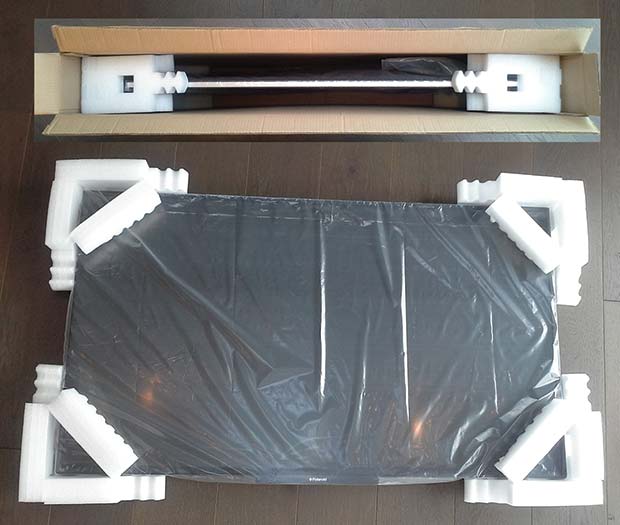Antalis Packaging has worked with a leading British supermarket chain to develop an innovative packaging solution for TV returns saving the retailer hundreds of thousands of pounds per year.
 With a number of customers returning TVs to store with minor issues within the warranty period, the retailer was faced with the challenge of managing an incredibly costly returns process. The onward process of sending faulty or damaged TVs to the returns centre, often without the televisions’ original packaging, meant that whilst some TVs left the supermarket for the returns centre as a high value re-saleable item, they would arrive as completely non-sellable due to further damage incurred in transit.
With a number of customers returning TVs to store with minor issues within the warranty period, the retailer was faced with the challenge of managing an incredibly costly returns process. The onward process of sending faulty or damaged TVs to the returns centre, often without the televisions’ original packaging, meant that whilst some TVs left the supermarket for the returns centre as a high value re-saleable item, they would arrive as completely non-sellable due to further damage incurred in transit.
Antalis Packaging, the leading supplier of innovative protective packaging solutions, began working with the supermarket chain to provide online packaging solutions in early 2016. The team became aware of the issue with TV returns and partnered with them to create a solution to protect the product in transit back to the return centre. Scott Byrom, key account manager for Antalis Packaging, comments: “As part of our contract with our client, we supply packaging for a whole range of products, including TVs.
After we came on board, the issue with TV returns was coming to a head. Both ourselves and the retailer knew there had to be a way to reduce the damage, and consequently the cost, through a better packaging solution.”
Early investigations quickly identified the boxes being supplied for television returns had been the same for a number of years. With five different size options, the boxes were designed for the old CRT TVs but were being used for today’s plasma screens. For the store, those boxes were the only means of packaging for the TVs to be returned. This often resulted in four or five TVs being placed in one box which frequently smashed or damaged the screens.
Scott continues: “The packaging brief very quickly became clear. The new packaging needed to fit individual TVs now being sold with sufficient internal protection for each model. We requested a breakdown of the smallest to largest TV dimensions, as well as annual sales of the range, to highlight where we first needed to focus. 50” was the most popular TV so that was our starting point – we created a standard packaging solution for that model and then adapted it to suit all other configurations.”
Four box sizes were determined to fit the range of TVs, within which the internal protection was a polyethylene foam – a dense foam product which can be used to make bespoke shapes to create end caps, protecting the product from any drops or impact. As well as being able to cushion the TVs, a removable foam piece was designed to fit the plug as, all too often, a loose, exposed plug in the box has resulted in a smashed screen. Once outer box sizes were correct and foam inner fittings deemed suitable, a trial was launched in one of the branches.
Scott comments: “The trial was imperative and something we recommend with all customers who look at introducing a new packaging solution. It’s essential to see the product in action but also to engage with the people who handle it to understand the challenges and conditions within which the product will be packaged. We spent time with staff to understand the resources they had, how they did things and any ideas they had to improve the process. This sort of collaboration is imperative when trying to instil a change.”
ANTALIS PACKAGING




Comments are closed.